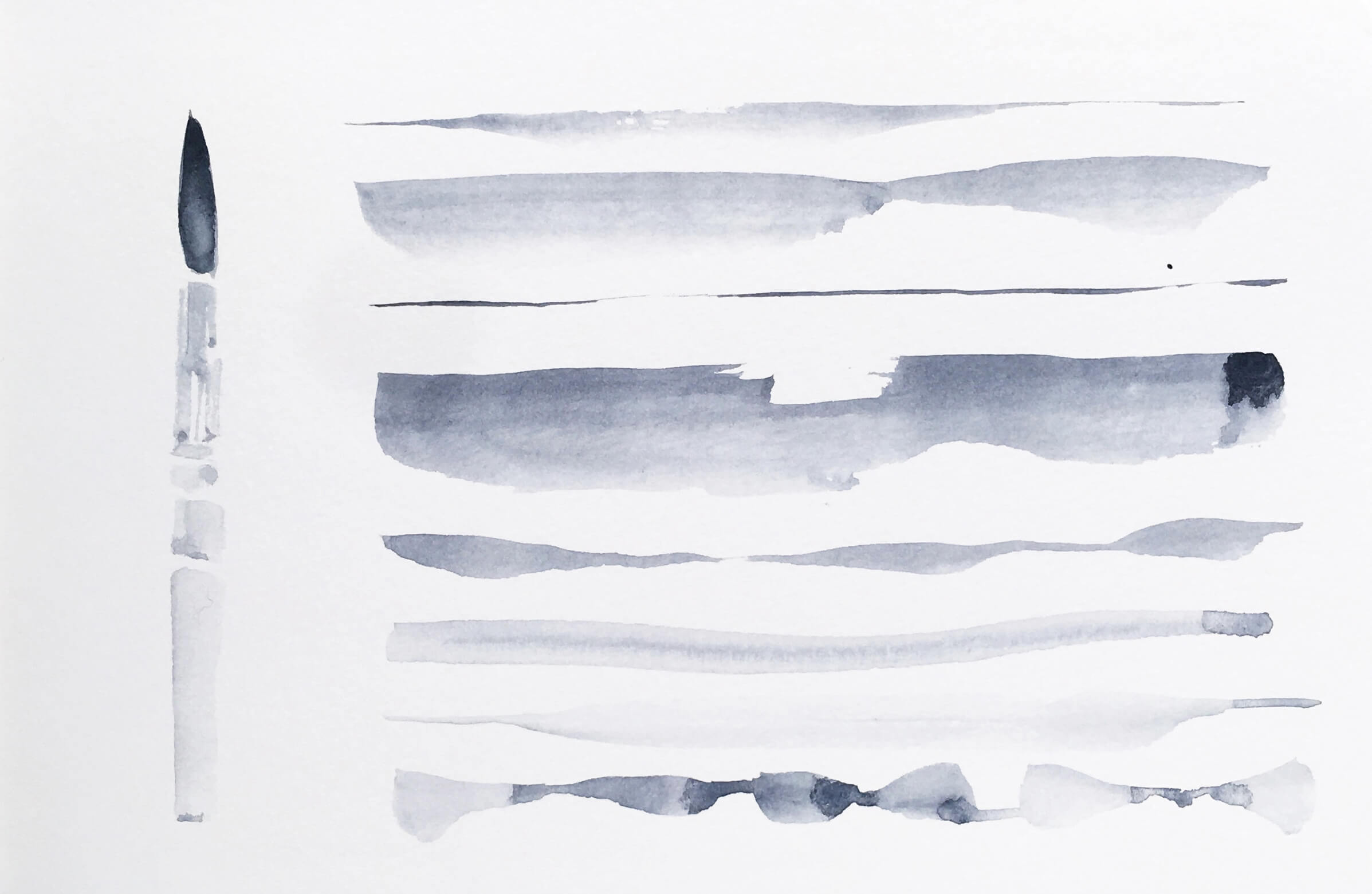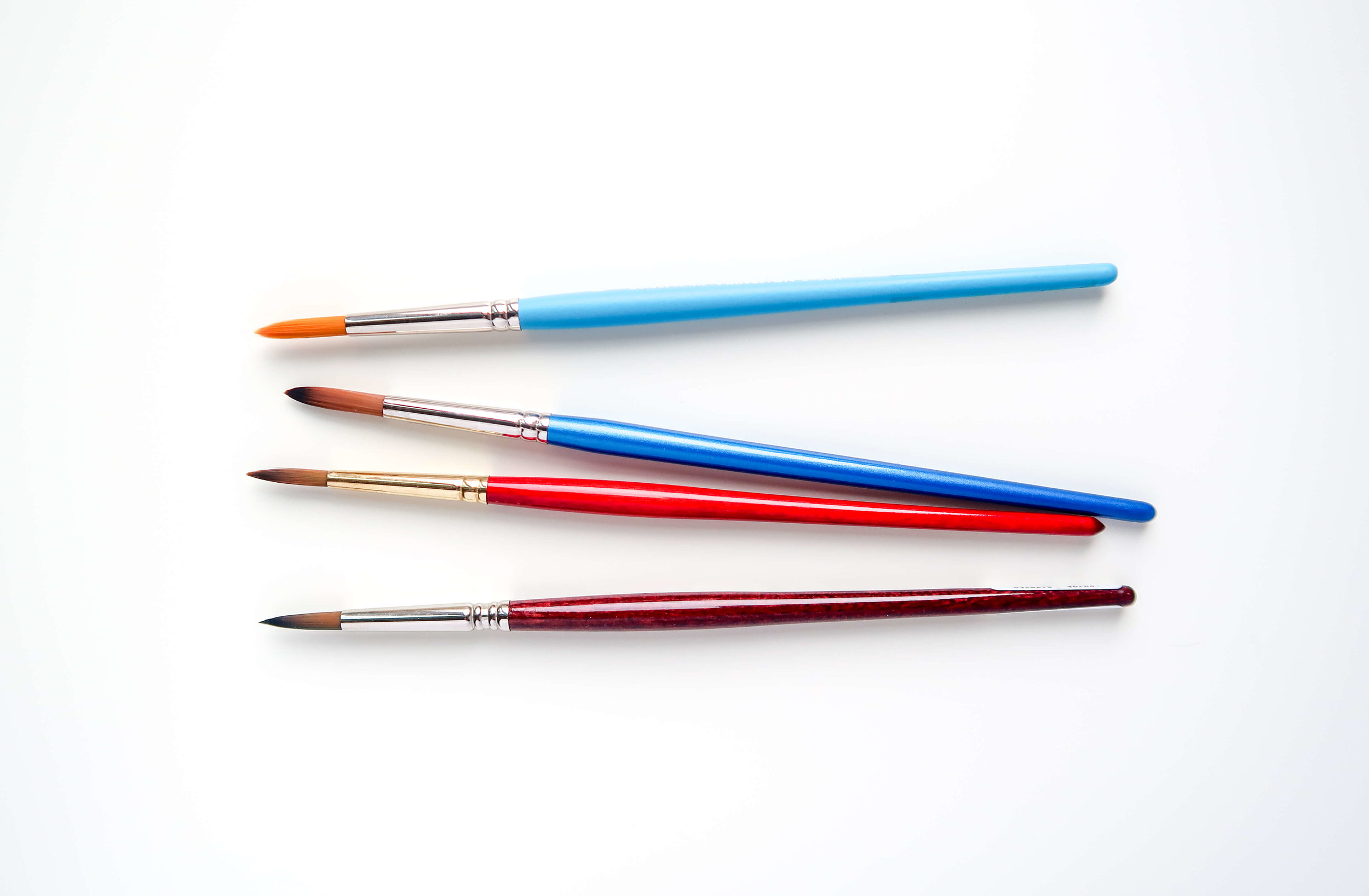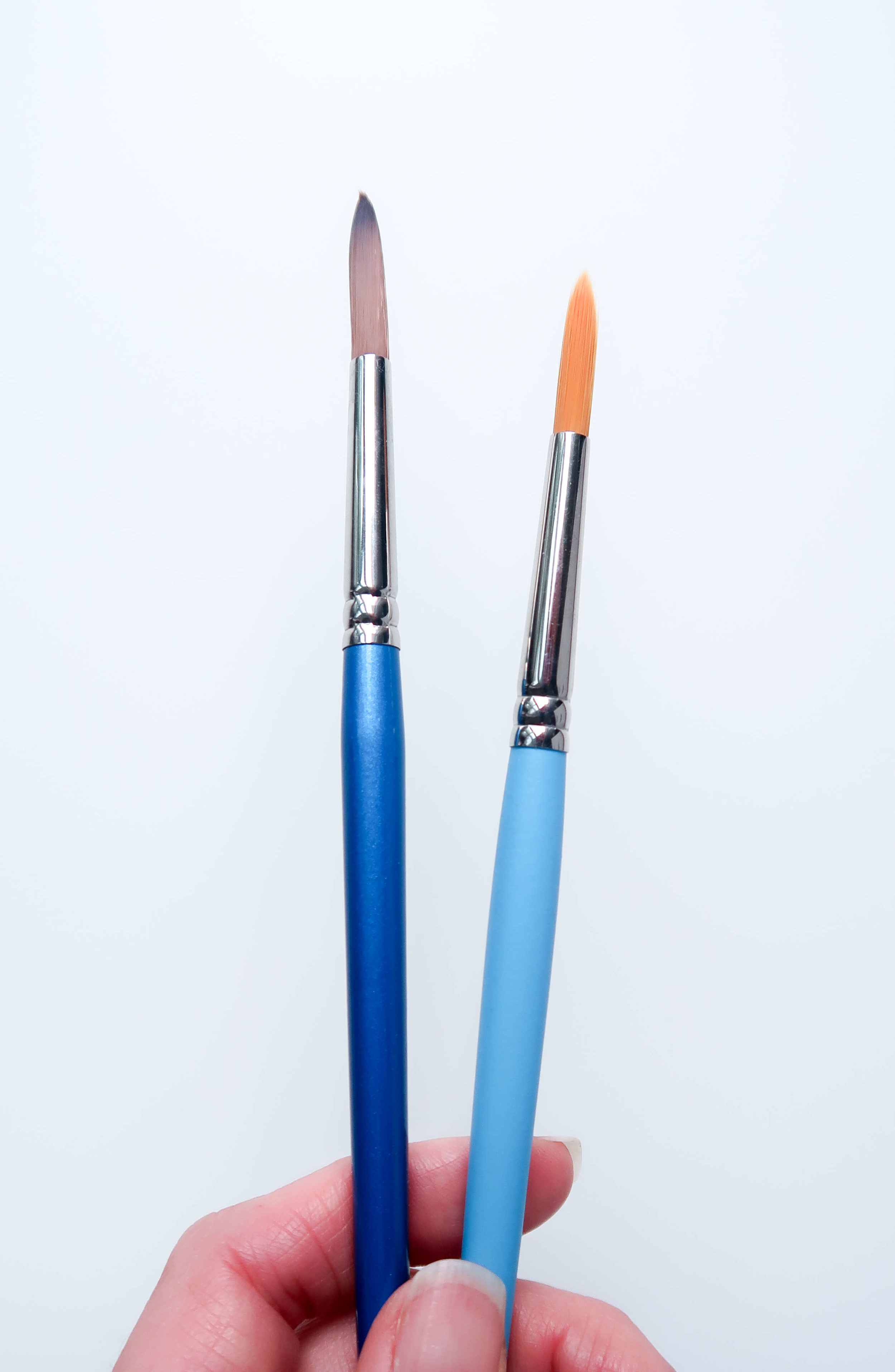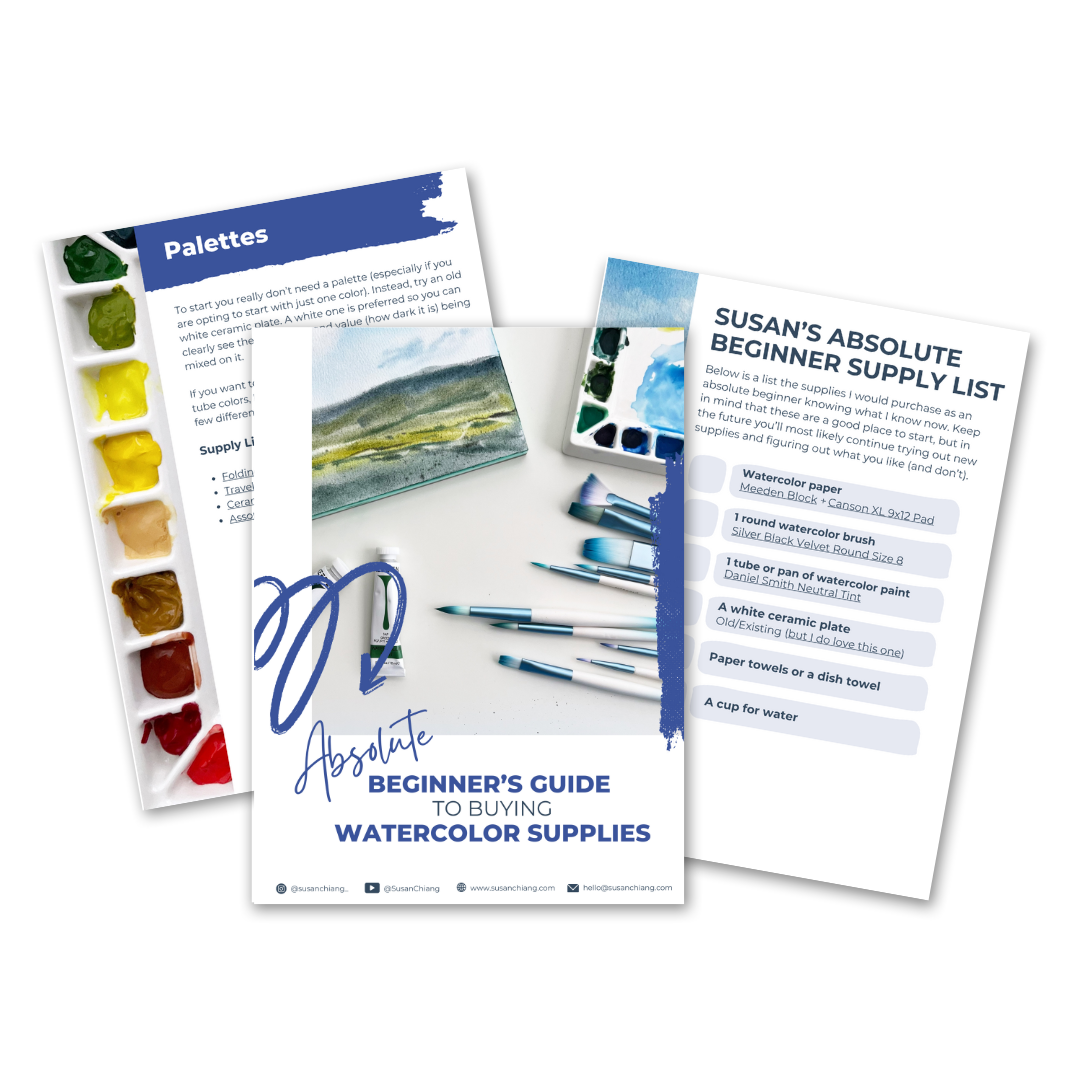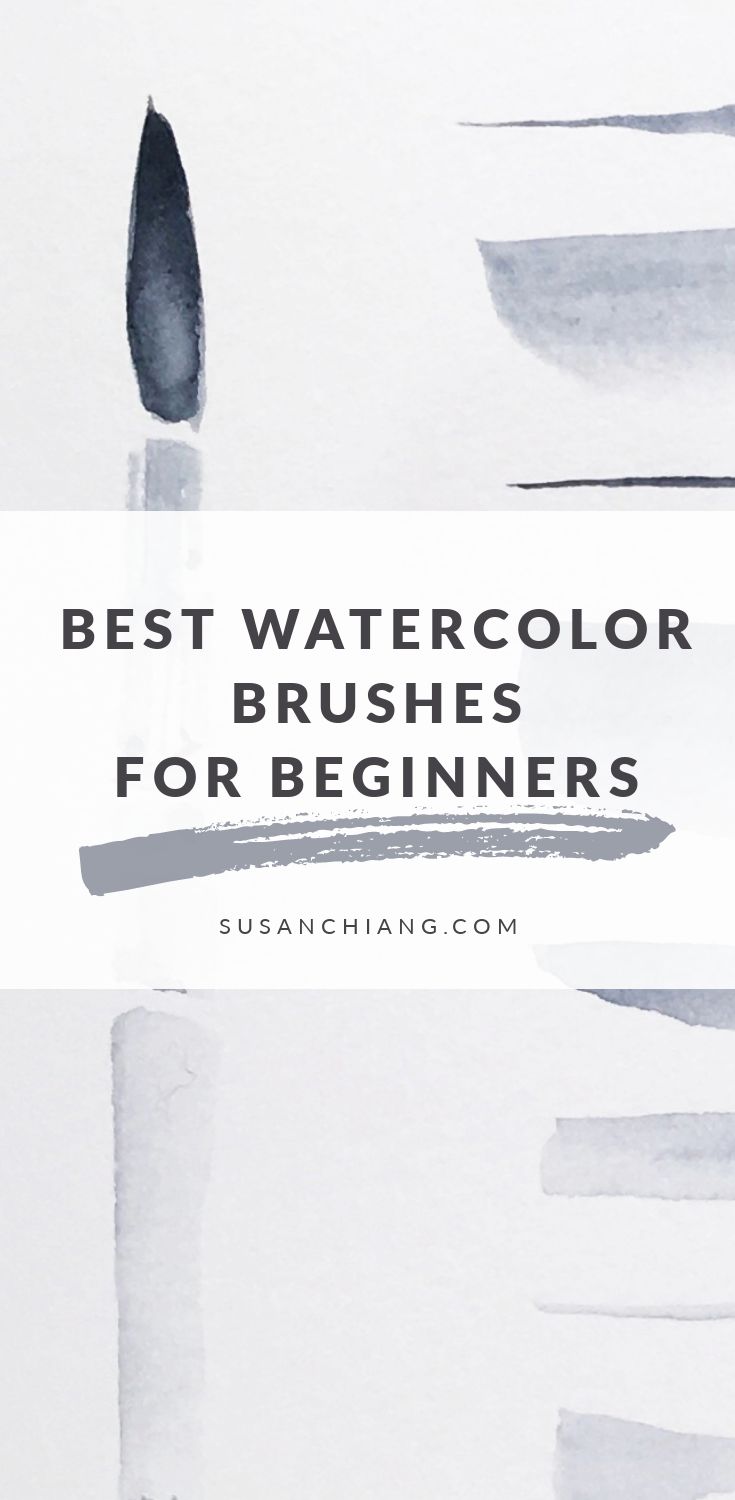Best Watercolor Brushes for Beginners & Beyond
If you’ve tried buying watercolor brushes you already know how many choices there are out there. I remember when I first started with watercolors, I wandered into the art store intent on getting one brush and maybe 3 tubes of paint and when I got there I had NO idea what to pick.
Round, flat…what’s this dagger looking thing? Why is this one so long? Should I get Winsor & Newton or this other brand with the dark blue handle? Wait - there’s a brand with a red handle too…But this is under “Level: 2”. Am I “Level 2”?
Over time I researched A LOT and tested quite a few brushes and I’m going to have to say that I agree with a number of painters out there that recommend only round brushes and MAYBE a flat brush to start.
After going through many brands and types of brushes, I’ve narrowed it down to what I like and I’ll share them with you here so you can steer clear of wasting your money and time and just grab one or a few of these below!
I am going to divide the brush recommendations into two categories: Beginner and Beyond Beginner. If you find that you’re really into watercolors, you might want to skip to the Beyond Beginner category because these brushes are the ones I still use everyday and you might as well start with them if you think you’ll keep painting.
I purposely provided very few recommended options because otherwise I think it gets overwhelming when you’re just starting. The idea is to get the some reliable brushes and start painting!
ABOUT BRUSHES, BRIEFLY
Watercolor brushes come in many shapes. For beginners I recommend to start with round brushes, and add a flat brush if you want.
The highest class (and most expensive) brushes are made of sable hair. The finest brush being the kolinsky sable. According to wikipedia: “The hair is obtained from the tail of the kolinsky (Mustela sibirica), a species of weasel rather than an actual sable. The "finest" brushes are made from the male hair only, but most brushes have a mix of about 60/40 male-to-female hair.” Sable hair is known for its ability to hold more water, maintain its shape and sharp point.
Synthetic brushes are less expensive and tend to hold less water. They still have the ability to come to a point but, but are much stiffer than sable hair brushes.
I actually find that I enjoy painting more with synthetic brushes as the sable hair brushes I’ve come across feel almost too “moppy”.
The brushes recommended below will all be synthetic or synthetic sable. In the end, brushes are a very personal choice, so you may find that you prefer those that hold more water as you continue exploring.
BEGINNER BRUSHES
These are the least expensive watercolor brushes that still work well without falling apart. They don’t come to as sharp a point as I would like, but still do a good job maintaining their shape.
Princeton Series 3750 Select Synthetic
Good snap back, pretty sharp point, doesn’t hold as much water as I’d like
Winsor & Newton Cotman Watercolor Brushes
Good snap back, not as sharp, holds a better amount of water
BEYOND BEGINNER BRUSHES
Even though I’ve called these “Beyond Beginner” brushes, don’t let it stop you from buying them if you consider yourself a beginner. They don’t differ much in price from the Winsor & Newton Cotman Series and I love them much more! In fact, the Princeton Series are the brushes I use almost every time I paint.
Princeton Series 4050 Heritage Synthetic Sable
Great snap back, sharp point, holds a good amount of water. I keep coming back to these.
Escoda Prado Tame Synthetic
If you’re willing to spend a more money, you can check out these brushes. They are have the same great qualities as the Princeton, but perform just a little better in terms of shape and point.
BRUSH SIZE RECOMMENDATIONS
When it comes to brush sizes, there are a lot of choices It really depends on what you’re planning on painting. But you’ll definitely want to start out with the basics:
Size 6
If you're only starting with one brush a 6 (or even a size 8) is a great choice. Small enough for details, but big enough paint larger areas.
Size 2
Good choice for your second brush.
Gives you flexibility to paint smaller paintings and more details.
Size 12
Paint larger washes and make big, bold strokes. Useful once you have the confidence to paint bigger and take up more room on the paper.
FLAT BRUSH
Try a 1/2" flat brush in any of the brands above if you want to add on to your collection beyond rounds. Flat brushes are good for square and rectangular strokes, they also make thin strokes when used on the side.
What about WATERBRUSHES?
You might be wondering about waterbrushes - the plastic barrel brushes that hold water. In short: waterbrushes are not watercolor brushes. I wouldn’t use these for watercolor painting at home - the brush tip doesn’t have the same qualities as watercolor brushes and you’ll likely end up frustrated. However, these are useful for sketching watercolors on the go, adding color to ink drawings, and would work great with watercolor pencils. I also love these brushes for lettering - they are easier for me to control than a real paintbrush, and you can fill the barrel with color if you want!
I hope that this summary of watercolor brushes helped you. In some ways, this only grazes the surface of all the different brushes that are out there, but I really believe you don’t need a lot to start. I started with one brush and a few tubes of paint and in a lot of ways being limited in choices is what make painting a lot less daunting.
I know that getting the right supplies when starting out can be overwhelming (and quickly becomes a money pit), so I created a straightforward cost guide, supply checklist, and cheatsheet for all the basic supplies I use:
Get guidance on buying brushes and the rest of your supplies, too!
As always, thank you for reading!
Susan
*Disclosure: Some links contained in this post are affiliate links, which means that if you click on one of the product links, I’ll receive a small commission. Your cost remains the same - thank you for the support!

